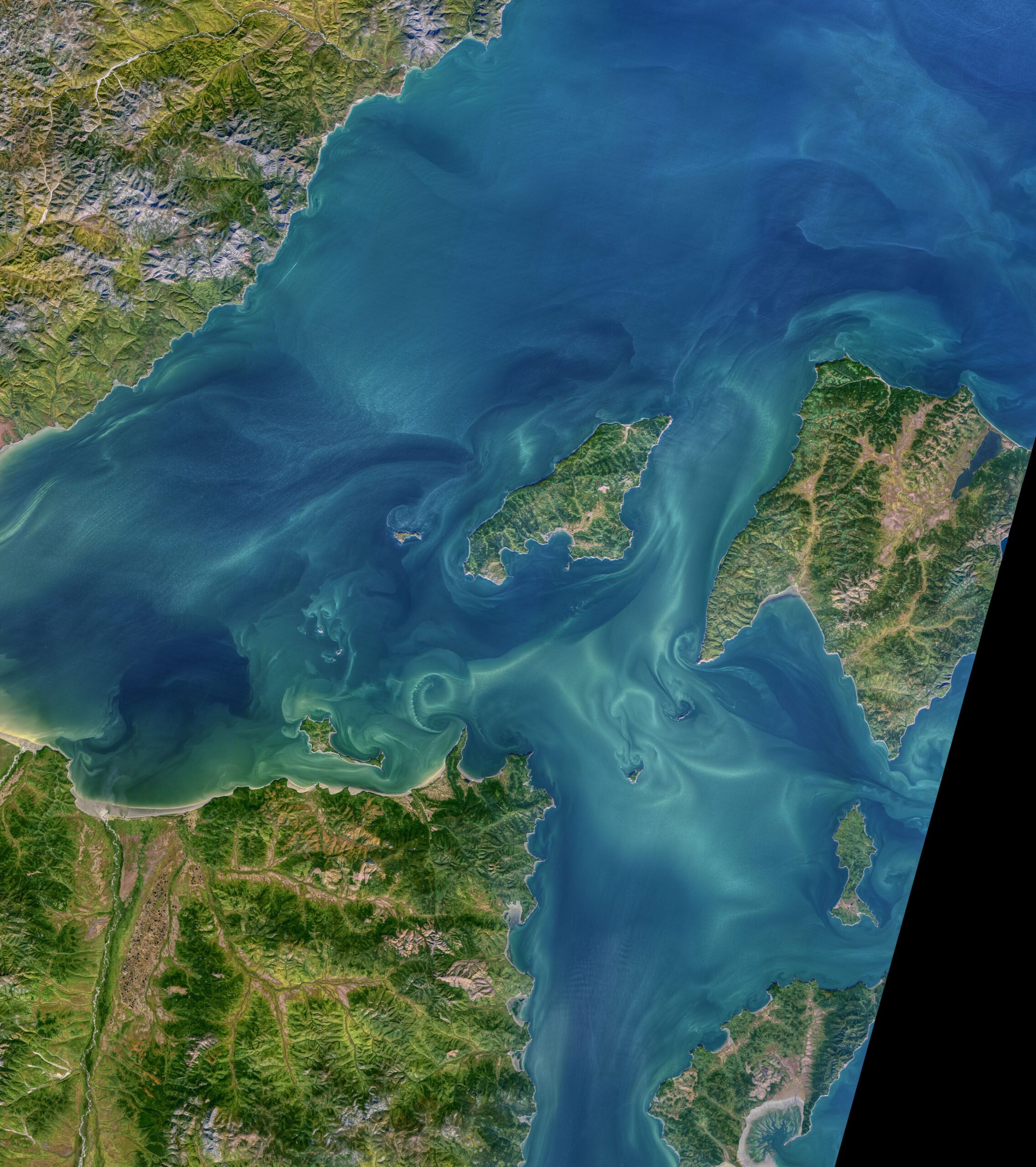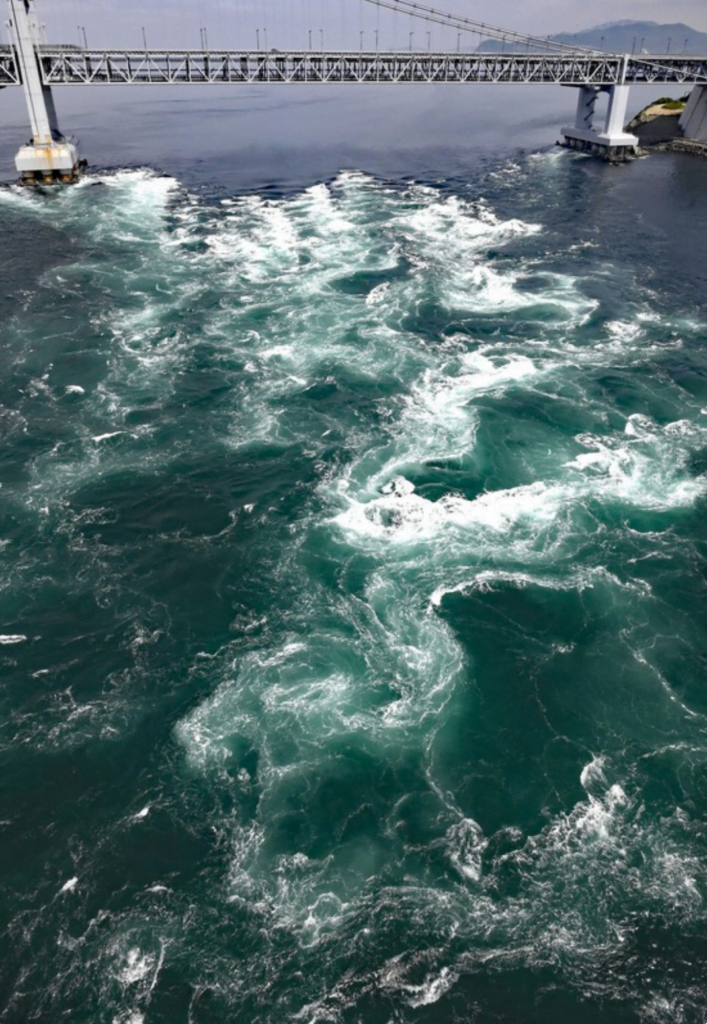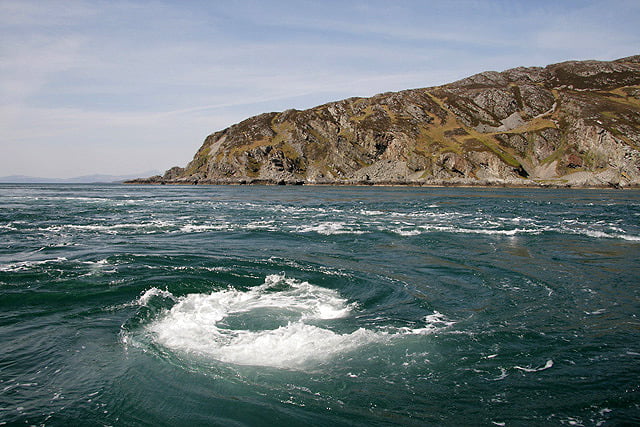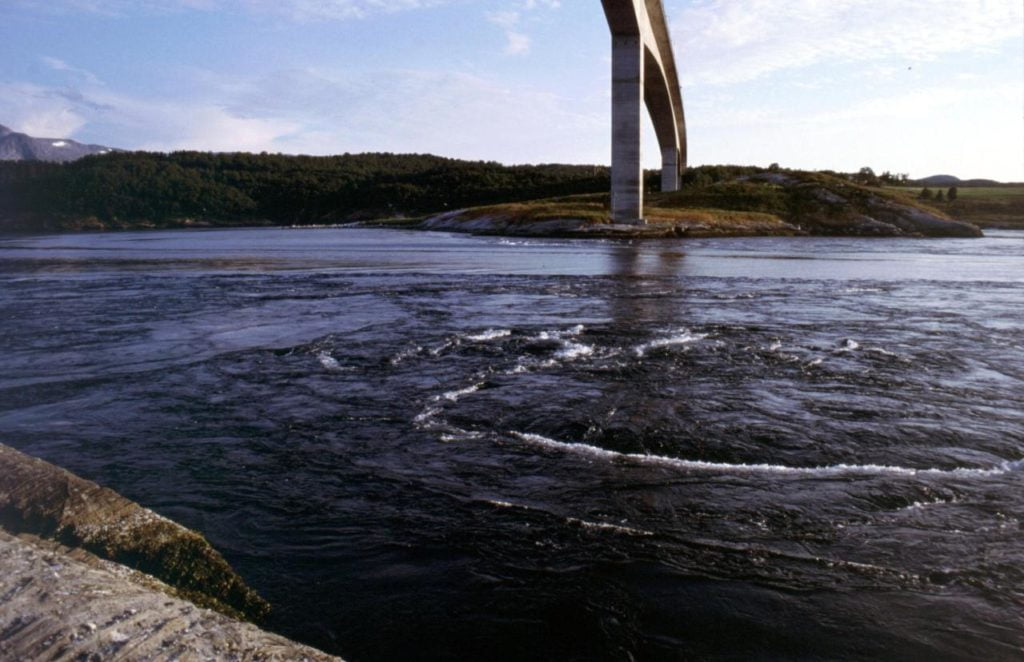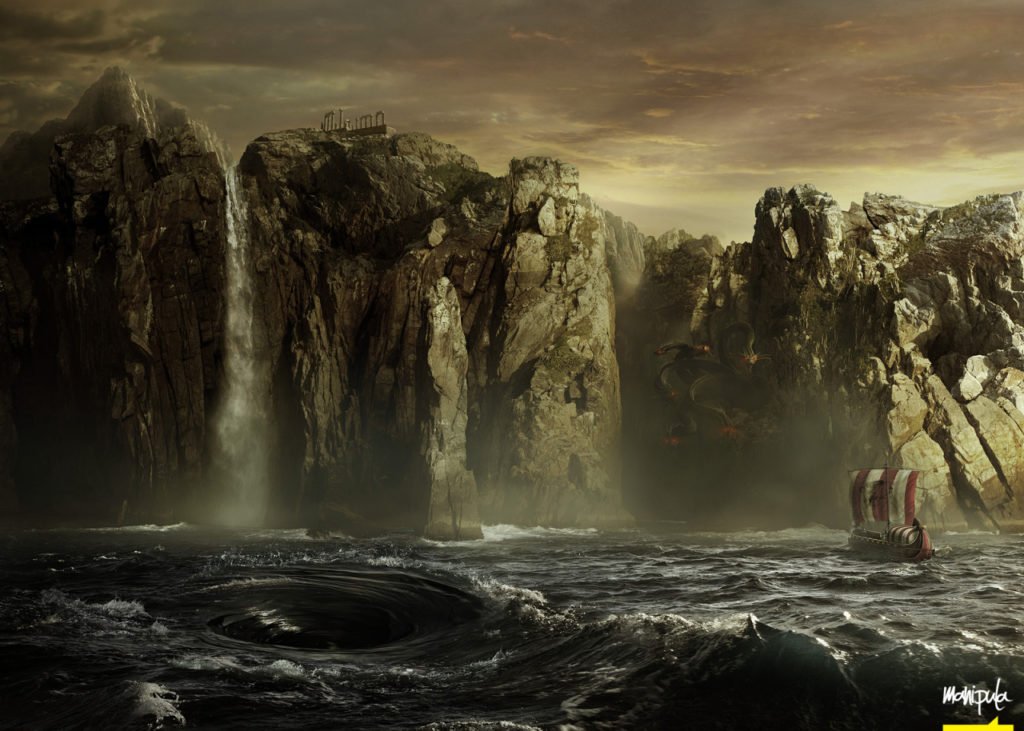Off western Australian, hundreds of low-lying islands and coral reefs jut into the ocean as part of the Buccaneer Archipelago. Tides here have a range of nearly 12 meters, so water rips through the narrow channels as the tide ebbs and flows. These fast flows lift sediment that dyes the water a bright turquoise. (Image credit: M. Garrison; via NASA Earth Observatory)
Tag: tides

Branching Dendrites
This award-winning aerial image by photographer Stuart Chape shows a tidal creek in Lake Cakora, New South Wales, Australia. At first glance, it looks much like any river delta, with branching dendritic paths that split into smaller and smaller waterways. That’s deceptive, though, because very different forces shape this creek. Because tides move in and out, a tidal creek is home to flows that move both directions — toward and away from the branches. That also means that flow speeds can change rapidly as the tides shift, which in turn changes which sediments get lifted, dropped, and moved around the creek bed. (Image credit: S. Chape/IAPOTY; via Colossal)

Langebaan Lagoon
Strands of green and brown mix in Langebaan Lagoon on the South African coast in this astronaut photograph. The shallow tidal estuary has a sandy floor and, since no river flows into it, the deeper green sections seen here are channels carved solely by the back-and-forth flow of the tides. To the north of the lagoon, Saldanha Bay is a busy hub for fishing and industry. The long reddish line extending into the water is a railroad pier responsible for loading 96 percent of South Africa’s iron ore gets loaded onto ships. (Image credit: NASA; via NASA Earth Observatory)

Capturing the Tides
Twice a day the tides rise and fall along coastlines. Increasingly, engineers are trying to harness these regular currents for clean energy. Tidal turbines spin during the fastest flows, turning a rotor that powers an electrical generator. Compared to wind and solar energy, tidal energy is expensive, but it’s also predictable — a feature wind and solar lack.
Previous investments in clean energy have reduced costs as technologies mature, and proponents expect this will hold true for tidal turbines, as well. The machines face difficult conditions: salt and water are notoriously tough on equipment. Right now that makes large-scale facilities impractical. Instead, most projects are on a smaller scale, often focusing on powering remote rural coastal communities that currently rely on diesel for their electricity. These projects provide immediate benefits to the community while serving as a proving ground for the technology as a whole. For more, see this Physics Today article. (Image credit: Nova Innovation; see also Physics Today)

Tidal Vortices
Local topography in the Sea of Okhotsk funnels water to create some of the largest diurnal tides in the world — nearly 14 meters! The currents rushing past islands and outcrops create swirling vortices like the ones seen in this natural-color satellite image. In some places, you can even see multiple vortices, strung together into a von Karman vortex street. At high tide, the vortex streets stretch westward, but at low tide they point east. (Image credit: N. Kuring/NASA/USGS; via NASA Earth Observatory)

“Ruin of the Tides”
As tides and waves flow back and forth over a beach, they erode the sandy shore. Here photographer Michael Shainblum captures the streaks and rivulets left by a falling tide. These “ruins” resemble an extensive river delta viewed from above. I love the complicated branches carved by the water’s retreat. (Image credit: M. Shainblum)

High Tide
Broad Sound, in eastern Australia, is home to some of the most extreme tidal swings in the world, with more than ten meters difference between high and low tides. The bay’s peculiar geography, along with the topography of nearby reefs, combine to cause the large tides. This color-enhanced satellite image shows the bay at high tide, as phytoplankton and suspended sediments are swept into the bay and around its many islands. The level of detail is just stunning. I particularly love all the von Karman vortex streets visible in the wakes of islands. I count more than a dozen of them! (Image credit: N. Kuring/NASA/USGS; via NASA Earth Observatory)

The Naruto Whirlpools
Enormous whirlpools are not simply the work of overactive imaginations. There are several spots in the world, including Japan’s Naruto Strait, that regularly see these spectacular vortices.
Naruto’s whirlpools are formed through the interaction of tidal currents with the local topography. Spring tides funneled through the vee-shaped strait can reach speeds of 20 kph as they rush between the Pacific Ocean and the Inland Sea. Below the surface, there’s also a deep depression that helps bring the tides together in such a way that it generates vortices 20 meters in diameter.
In normal times, the whirlpools are a significant tourist attraction during the springtime. Travelers can view them from tour boats, helicopters, and from the Onaruto Bridge. (Image credits: whirlpools – Mainichi/N. Yamada, Discover Tokushima; artwork: Hiroshige; via Mainichi; submitted by Alan M.)

Tides
Most of us think we understand why Earth’s oceans have tides, but it turns out that there are some misconceptions in the common explanation. Yes, it’s true that the moon’s gravity pulls on water in the ocean, but it equally pulls on everything else, too, and we don’t levitate at high tide! In reality, it’s the distribution of tidal forces across the enormity of the ocean that causes the ocean to bulge along the Earth-moon line and create high and low tides. Lakes, puddles, and humans experience tides, too, but we’re so small that the tidal forces we experience are too tiny to be noticeable. For the full explanation, I encourage you to watch PBS Space Time’s video. Don’t let the 15 minute run-time deter you; the tidal explanation is contained within the first 9 minutes. (Video credit: PBS Space Time; via It’s Okay To Be Smart)

Real-Life Whirlpools
Literature is full of descriptions of monstrous whirlpools like Charybdis, which threatens Homer’s Odysseus. While it’s not unusual to see a small free vortex in bodies of water, most people would chalk boat-swallowing maelstroms up to literary device. But it turns out that, while there may not be permanent Hollywood-style whirlpools, there are several places in the world where the local tides, currents, and topology combine to produce turbulence, dangerously vortical waters, and even standing vortices on a regular basis.
One example is the Corryvreckan, between the islands of Jura and Scarba off Scotland. In this narrow strait, Atlantic currents are funneled down a deep hole and then thrust upward by a pinnacle of rock that rises some 170 m to only 30 m below the surface. The swift waters and unusual topology produce strong turbulence near the surface and whirlpools pop up throughout the strait. Other “permanent” maelstroms, such as those in Norway and Japan, arise from tidal interactions with similar structures rising from the sea floor.
For more, check out this Smithsonian article, Gjevik et al., Moe et al., and the videos linked above! (Photo credits: Manipula, Tokushima Gov’t, Wikimedia, and W. Baxter; requested by @kb8s)




